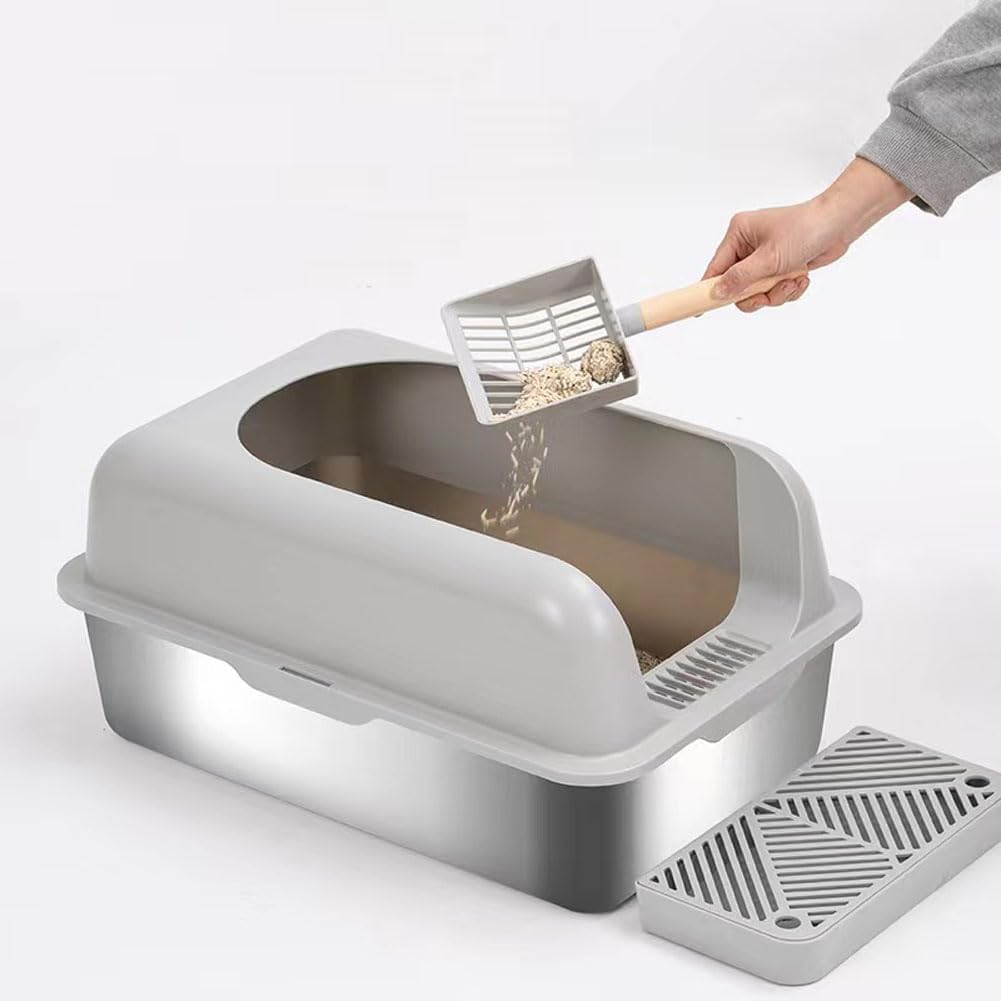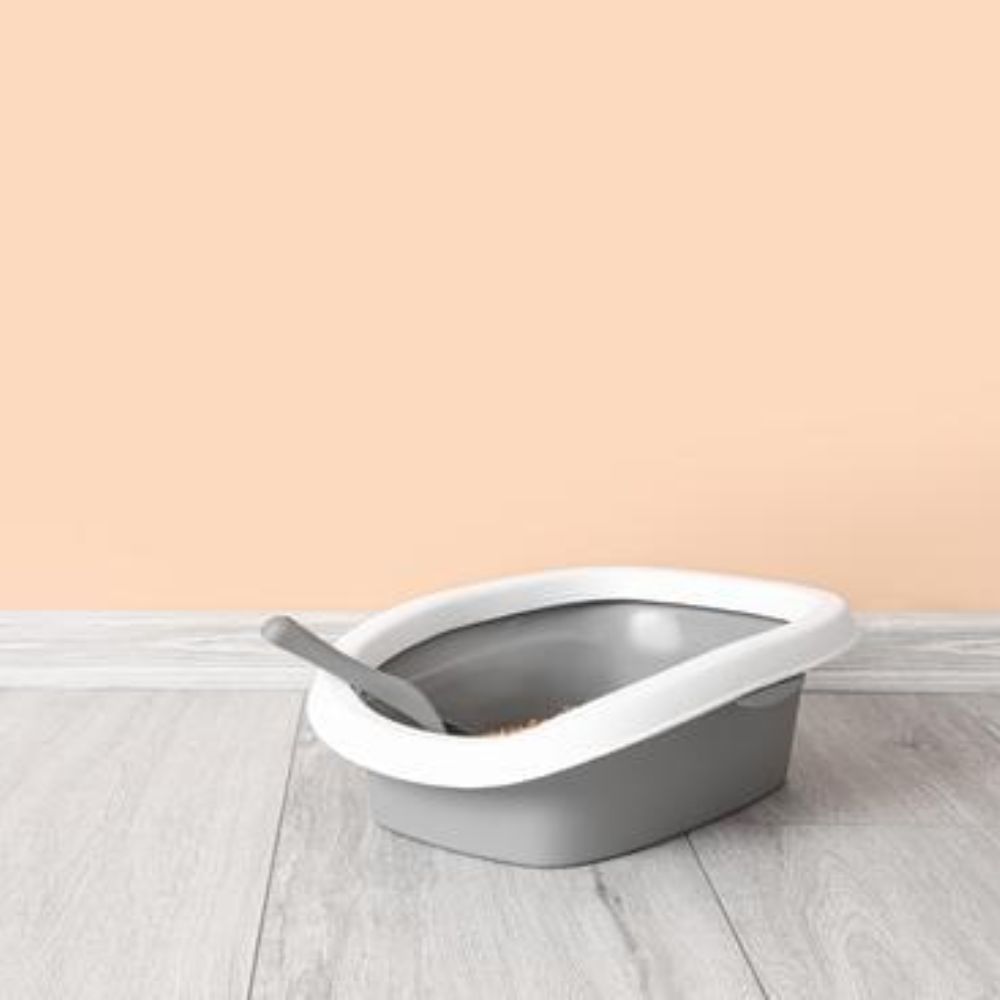Choosing the right cat litter box can feel like a Herculean task. Between stainless steel and plastic options, there’s a lot to consider. You want something that suits your cat’s needs, fits your home, and makes cleaning up as hassle-free as possible. So, which one should you choose? This article dives into the nitty-gritty of the stainless steel vs plastic cat litter box debate, breaking down the benefits and drawbacks of each to help you make an informed decision.
Stainless Steel vs Plastic Cat Litter Box: What Are the Difference?
Hygiene and Odor Control
Hygiene is a top priority when it comes to litter boxes. No one likes a stinky home, and let’s face it, our feline friends can be quite particular about their bathroom habits.
- Stainless Steel: One of the biggest selling points of stainless steel cat litter box is their non-porous surface. This means they don’t absorb odors, and they’re a breeze to clean. A quick rinse and they’re good as new, preventing the build-up of bacteria and foul smells.

- Plastic: On the flip side, plastic litter boxes can absorb odors over time. The porous nature of plastic allows it to trap smells, which can lead to a less-than-pleasant aroma lingering in your home. Even with regular cleaning, plastic can start to retain odors, making it harder to maintain a fresh-smelling environment.

Durability and Longevity
When investing in a litter box, you want something that will stand the test of time. Let’s compare the durability of stainless steel and plastic options.
- Stainless Steel: These litter boxes are incredibly durable. They can withstand claws, bites, and heavy use without showing signs of wear and tear. Stainless steel won’t crack, chip, or break, ensuring it lasts for years.
- Plastic: While plastic litter boxes are generally more affordable, they tend to wear out faster. Over time, plastic can become scratched and brittle, leading to cracks and the need for replacements. If your cat is particularly aggressive with their digging, a plastic box might not last long.
Ease of Cleaning
No one wants to spend a lot of time cleaning a litter box, so ease of maintenance is a crucial factor.
- Stainless Steel: These boxes are easy to clean and maintain. A simple rinse with soap and water is usually enough to keep them spotless. Because they’re non-porous, you don’t have to worry about deep cleaning to remove trapped odors or bacteria.
- Plastic: Plastic litter boxes require more frequent and thorough cleaning. The porous surface can harbor bacteria and odors, necessitating more rigorous scrubbing and occasional deep cleaning with bleach or other disinfectants.
Deep Cleaning
Both types of litter boxes need a thorough cleaning from time to time. Here’s how they compare:
- Stainless Steel: For deep cleaning, stainless steel litter boxes are straightforward. You can use hot water and mild detergent, or even vinegar, to get them sparkling clean. They dry quickly and don’t retain moisture or odors.
- Plastic: Deep cleaning a plastic litter box can be a bit more challenging. Over time, plastic can develop scratches and grooves where bacteria and odors can hide. You’ll need to scrub these areas thoroughly and might even have to replace the box more frequently to ensure it remains hygienic.
Environmental Impact
In today’s eco-conscious world, the environmental impact of our choices is more important than ever. Let’s look at the sustainability of stainless steel and plastic litter boxes.
- Stainless Steel: Stainless steel is highly recyclable. When you eventually decide to replace your stainless steel litter box, it can be recycled and repurposed, reducing waste and contributing to a circular economy. The long lifespan of stainless steel also means fewer replacements and less waste overall.
- Plastic: Plastic litter boxes, while recyclable, are less eco-friendly. Plastic production contributes to pollution and waste, and many plastic items end up in landfills rather than being recycled. The shorter lifespan of plastic boxes means more frequent replacements, increasing waste.
Cost Considerations
The upfront cost can be a significant factor in your decision.
- Stainless Steel: These litter boxes typically have a higher initial cost. However, considering their durability and longevity, they can be a cost-effective choice in the long run.
- Plastic: Plastic litter boxes are generally more affordable upfront. This makes them an attractive option for those on a budget, but you might end up spending more over time due to the need for replacements.
Long-Term Value
When assessing cost, it’s essential to think long-term.
- Stainless Steel: The durability of stainless steel means fewer replacements. This can save you money in the long run, making the higher initial investment worthwhile.
- Plastic: Although cheaper initially, the need to replace plastic litter boxes more frequently can add up. Over time, you might find that the cumulative cost exceeds that of a single stainless steel box.
Cat Preferences
Believe it or not, your cat might have a preference when it comes to their litter box.
- Stainless Steel: Cats that are sensitive to odors or prefer a cleaner environment might appreciate the hygiene benefits of stainless steel. The smooth surface can also be more comfortable for some cats.
- Plastic: Some cats might be indifferent to the material of their litter box. However, others might find the texture of plastic more familiar, especially if they’ve always used plastic boxes.
Owner Preferences
As the one cleaning the box, your preferences matter too!
- Stainless Steel: If you value easy cleaning and long-term durability, stainless steel is a fantastic choice. The sleek appearance can also be a plus if the litter box is in a visible area of your home.
- Plastic: If you’re looking for a budget-friendly option and don’t mind the extra cleaning effort, plastic might be the way to go. Plus, plastic boxes come in a variety of colors and designs, allowing for more customization.
FAQs
Can Plastic Litter Boxes Be Recycled?
Yes, many plastic litter boxes can be recycled, but it depends on the type of plastic and local recycling programs. Check with your local recycling center to see if they accept plastic litter boxes.
How Often Should I Replace My Cat’s Litter Box?
For stainless steel litter boxes, replacement might only be necessary if the box becomes damaged, which is rare. Plastic litter boxes should be replaced every 6-12 months or sooner if they become heavily scratched or start to retain odors.
Do Cats Have a Preference for Litter Box Material?
Cats can be quite particular. Some might prefer the smooth, cool surface of stainless steel, while others might be more accustomed to plastic. It can depend on their past experiences and individual preferences.
Is a Stainless Steel Litter Box Worth the Investment?
While the initial cost is higher, the long-term benefits of durability, ease of cleaning, and reduced odor retention can make stainless steel a worthwhile investment for many cat owners.
Conclusion
There’s no one-size-fits-all answer to the stainless steel vs plastic cat litter box debate. Each material has its own set of pros and cons, and the best choice depends on your priorities and your cat’s preferences.
Stainless steel offers unbeatable durability, superior hygiene, and long-term value, making it a great choice for those willing to invest more upfront. Plastic, while more affordable initially, requires more frequent replacements and can retain odors, but it’s a viable option for those on a budget.
Consider what matters most to you and your feline friend—ease of cleaning, cost, environmental impact, or durability. Ultimately, a happy cat and a happy owner make the best combination!
